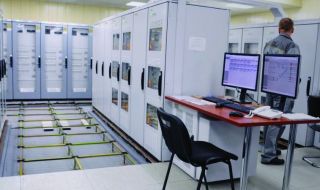Florida PSC clears way for accelerated Crystal River-3 D&D

Crystal River-3 as it is now and how Duke Energy envisions the site will look by 2027.
The Florida Public Service Commission voted unanimously on August 18 to approve Duke Energy Florida’s plan to accelerate the decontamination and decommissioning of its Crystal River-3 nuclear power plant. The commission vote marks the final regulatory approval needed to finalize, in October, Duke Energy’s contract with Accelerated Decommissioning Partners (ADP). According to Duke Energy, ADP will complete the decommissioning by 2027, rather than the 2074 date that was originally announced.
Duke Energy permanently ceased operations at Crystal River-3 in 2013 and, in June 2019, the company applied to the Nuclear Regulatory Commission to transfer the reactor’s license to ADP, a joint venture of NorthStar Group Services and Orano Decommissioning Holdings. The NRC approved the license transfer in April. NorthStar will also be contracted to demolish the permanently shut down coal-fired Crystal River-1 and -2.









 The National Commission on Grid Resilience (NCGR) has released a report recommending a series of actions to better address threats to the bulk power system in the United States. While noting that “substantial progress has been made in a short time” toward improving grid resilience, the report declares that “more needs to be done, and in record time.”
The National Commission on Grid Resilience (NCGR) has released a report recommending a series of actions to better address threats to the bulk power system in the United States. While noting that “substantial progress has been made in a short time” toward improving grid resilience, the report declares that “more needs to be done, and in record time.”
